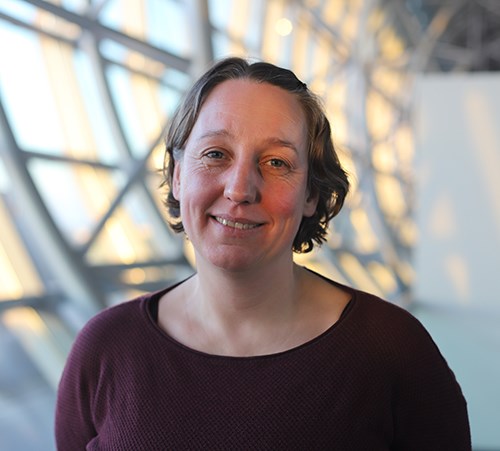Contact
Konstantinos Karantininis, Professor
Department of People and Society

Birgit Koehler, a researcher specializing in aquatic resources at the Swedish University of Agricultural Sciences. She contributed to the development of the background paper for the Science Policy Lab held in Mombasa.
What is your vision of a sustainable aquatic food system and what are the needs to get there?
Everybody should have access to aquatic foods, and people should be aware of their beneficial values for the health of all ages. Aquatic foods are so healthy and unique and, in many ways, environmentally friendly. One important aspect is to reduce loss and waste of aquatic foods in the system, which can still be very high. For example, when we were visiting a small-scale fishing community in Kenya, the small-scale fishers, processors, and traders told us that about half of their catch can turn to waste before it is possible to process, consume, or sell it. This is, for example, due to a lack of cooling options and other infrastructure. This is just one example where there is a large potential to make the aquatic food system more sustainable.
What are the main challenges to getting the aquatic food systems more sustainable with less waste?
Small-scale actors contribute to about half of all aquatic food production, and they need secure fishing rights and defined fishing areas, including landing sites. Small-scale actors must be equipped to cool and process the catch or production to make it last longer. They also need to get better connected to markets to sell their products. It seems much could be solved relatively easily by supporting food preservation and processing, like cooling and smoking. Through improvements in processing and trading, more people can access aquatic foods, such as those living far from coasts or inland waters. The same is true for promoting small-scale aquaculture, like fish farming, that can be done in areas remote from coast and inland waters. For example, in Kenya, approximately 70 percent of the people don't eat fish when they grow up and hence do not get the health benefits of aquatic foods. So, there is a huge potential to benefit both food and nutrition security and the environment by promoting small-scale aquaculture, reducing loss and waste, and improving trade and transport.
How should the multistakeholder networks be organised to fill the needs?
It's essential that small-scale actors and policymakers are included in multistakeholder networks. One of the challenges is making the networks work in the long run, not just starting up but maintaining them over time. They need support in governance to have structure and enough man - and womanpower. The members also need to see the value of being part of the network and how being part of a network can give them a voice, influence, and reach their goals.
What do you take with you from this global science policy lab?
I think people were enthusiastic about it. They saw the benefit of discussing with colleagues from very different fields, of sitting around the table with people with different perspectives. I could hear how participants thought that this is something to implement in our countries, and that it was helpful for them to have the time to discuss systematically what a multistakeholder network is and how it could be organized.
The interview was made during the Global Science-Policy Lab on Aquatic Food Systems in Brussels 3-4 March 2025 (SASi-SPi project funded by the European Union).
Konstantinos Karantininis, Professor
Department of People and Society